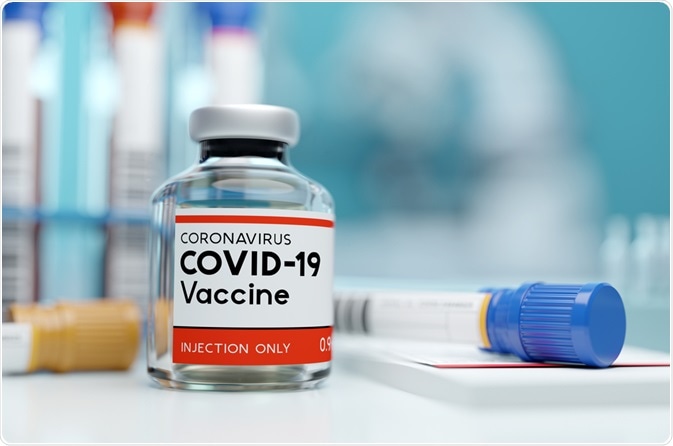Reverse genetics enables researchers to understand gene function by observing changes to phenotypes of cells and organisms that are created with modifications to their genomes. Reverse genetics also plays a crucial role in the development of highly specific live attenuated versions of vaccines against specific viruses.
 Image Credit: sokolova_sv/Shutterstock.com
Image Credit: sokolova_sv/Shutterstock.com
What is reverse genetics?
Reverse genetics is an experimental molecular genetics technique that enables researchers to elucidate gene function by examining changes to phenotypes (of cells or organisms) caused by genetically engineering specific nucleic acid sequences (within DNA or RNA).
In forward genetics, the genetic bases responsible for a particular phenotype are established – i.e. by examining naturally occurring mutations or mutations induced by radiation or chemicals. Mutant individuals (cells or organisms) are isolated based on their phenotype, and their genome is mapped to confirm phenotype to genetics.
Altering the genetic sequence in reverse genetics typically involves directed deletions and point mutations (site-directed mutagenesis) to create null alleles (non-functional); such as gene knockouts.
In mice, this can create an organism with a specific gene ‘knocked-out’ and the phenotype of the animal can then be observed. Knockouts lead to permanent loss-of-function genetic organisms (or cells) from birth.
Other techniques include genetic engineering to substitute DNA sequences for a one-for-one substitution – called a gene knock-in – which is then inserted into a specific locus. Both knockouts and knock-ins, in addition to other forms of highly targeted and specific genetic engineering, can be achieved by CRISPR-Cas9 – whereby a cells’ genome can be cut at a specific location allowing genes to either be removed or new engineered sequences to be inserted instead.
Gene knockdowns – an incomplete form of genetic knockout – can be achieved by gene silencing by the use of RNA interference (RNAi), typically by siRNA or Vivo-Morpholinos. Genetic knockdowns are typically temporary whereas genetic knockouts are permanent.
RNAi is especially useful to knockdown a gene without actually having to change the genetic sequence itself and maybe a useful therapeutic tool in the treatment of cancers, neurological diseases, and viral infections. RNAi is also an effective reverse genetics tool in creating a loss-of-function phenotype of a gene at any stage.
Conversely, overexpression of a normal gene of interest can also be engineered or overexpressing genetically engineered mutant forms of a gene. Overexpressing a mutant allele (whilst having one functional allele) may result in a dominant-negative interaction whereby the mutant allele produced a non-functional protein ‘outcompeting’ the functional protein.
Therapeutic applications of reverse genetics
So far, this article has discussed how reverse genetics can be used in the creation of genetically altered animals (or cells) to study the effect of specific genetic mutations (insertions, deletions; knockouts, knock-ins) on the phenotype.
However, reverse genetics has many important therapeutic applications – especially in the engineering of vaccines against viruses and/or the reconstruction of a viral genome.
In vaccine development, reverse genetics can be used to create viral strains that have reduced pathogenicity but still be able to be robustly recognized by the immune system to lead to the creation of antibodies against the virus. Doing so allows for specific alterations to the viral genome creating more advanced vaccinations (live attenuated vaccines) compared to the traditional heat-mediated inactivated vaccines.
Live attenuated vaccines have higher immunogenicity compared to inactivated vaccines due to the virus being ‘live’, however, this may present a problem in immunocompromised (immunodeficient) individuals.
Live attenuated vaccines are created by using reverse genetic tools to combine genes from current (novel) with previously altered (attenuated) viruses belonging to the same generic strain. However, as these live viruses are attenuated, they cannot replicate to the same extent as live unattenuated viruses, such that they are no longer able to sufficiently infect the host, but enough that immunity can develop.
The most successful example of a live attenuated vaccine is that of the influenza vaccine, which can provide up to 90% protection in adults under 65 years of age, and up to 40% of adults over 65. The influenza A virus has 8 RNA segments. In the live attenuated vaccine, a combination of 6 attenuated segments combined with 2 normal (WT) segments – engineered into plasmids – creating a live attenuated vaccine.
Concerning severe acute respiratory syndrome coronavirus 2 (SARS-CoV-2), the virus that causes COVID-19, many independent groups have successfully used reverse genetics to reconstruct its full genome and to assess specific sequences that help it to bind to its receptor (ACE2) as well as other key elements of the virus. Doing so provides a great boost in the hope to create a live attenuated vaccine for SARS-CoV-2, however, only time will tell if is effective in the prevention against COVID-19.
In summary, reverse genetics plays a crucial role in the development of genetically engineered cells and organisms that enable scientists to understand gene function by observing changes to their phenotypes. Examples include “knockout animals” or the use of CRISPR-Cas9.
Therapeutically, reverse genetics is used extensively to genetically modify viral genomes to alter their pathogenicity in the development of live attenuated vaccines, which have higher immunogenicity compared to traditional inactivated vaccines.
 Image Credit: solarseven/Shutterstock.com
Image Credit: solarseven/Shutterstock.com
References
Further Reading